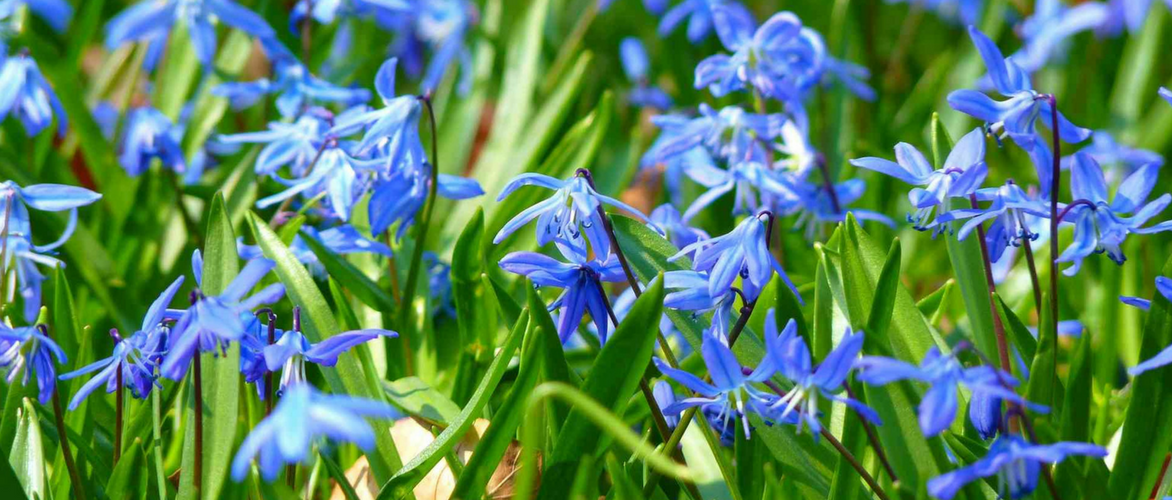
Scilla: planting, growing, and maintaining
Contents
Scillas in a nutshell
- Scillas are among the first bulbs to flower in spring
- They are easy to grow in partial shade
- Vigorous and very tolerant, they are hardy young plants
- They naturalise very easily in the smallest corners of the garden
- They naturalise in large carpets or can be grown in pots
A word from our expert
Slender and graceful, Scillas, Scilla or wood hyacinth are small spring bulbous plants that are easy to grow in non-burning sunlight or partial shade. Truly low-maintenance and very hardy, they thrive in all our gardens where they easily naturalise, forming flowering colonies over time.
In February, for the earliest varieties, their clusters of bell-shaped flowers, usually deep blue, sometimes pink or white, emerge from lush green tufts to herald the arrival of spring.
Campanulate scilla or Spanish scilla, Scilla nutans, or Siberian scilla, they fit in anywhere, whether in borders, pots, large naturalised carpets at the foot of deciduous trees, in rockeries, or scattered across the lawn. In the heart of spring, they create scenes filled with freshness and simplicity alongside other early spring bulbs, such as crocuses, daffodils, jonquils, wood anemones, hyacinths, or botanical tulips.
Their delicate flowering is also perfect for creating rustic bouquets of simple beauty.
Blue, white, or pastel pink scilla, discover all their planting and care secrets, as well as our collection of spring scillas to brighten up cool undergrowth, flower the garden with a very natural touch, or create beautiful spring planters.
Botany
“`html
Botanical data
- Latin name Scilla
- Family Hyacinthaceae
- Common name squill, wood hyacinth, false hyacinth
- Flowering From January to May
- Height 10 cm to 35 cm
- Exposure Sun, partial shade
- Soil type All
- Hardiness From -15°C and beyond depending on species
The squills or Scilla form a large and varied family, the hyacinth family, comprising around 90 species of bulbous perennials that are relatively unknown. These close relatives of hyacinths, native to Europe, South Africa, and Asia, grow naturally in very diverse biotopes and climates, ranging from mountain meadows to woodlands and rocky coastal areas. In France, they acclimatise up to 1,500 m in altitude.
There are numerous genera of squills, especially since the non-scripta hyacinthoides, such as the wood hyacinth or false hyacinth from Spain, are associated with them due to their strong resemblance to the “true” squills of the genus Scilla.
Among the spring squills, we distinguish the campanulate squill or Scilla hispanica, commonly cultivated, which prefers sun but tolerates partial shade, the wood hyacinth or Scilla nutans, the squill mischtschenkoana, very close to Sibirica but earlier, the two-leaved squill Scilla bifolia which favours cool woodlands, the sibirica squills (Siberian squill) and the Scilla litardierei, also known as meadow squill. In addition to the classic lilac blue, many cultivars of Hyacinthoides hispanica, very bright whites or pinks, have developed.
The Puschkinia scilloides Libanotica and Chionodoxa are also close relatives sometimes confused with squills.
Two species stand out, although they are part of the true squills, and are considered very distant cousins both in size, the appearance of their inflorescences, and their growing conditions: the Peruvian squill, Scilla peruviana, which is more tender, less hardy, preferring dry soils and very sunny exposures of the Mediterranean climate, and Urginea Maritima or sea squill, which is a protected species that grows very tall (1.5 m at maturity), moderately hardy, tolerating sea spray and is reserved for maritime climates.
Easy to cultivate, tolerant outside of the arid climates they fear, these bulbous plants are welcome at the end of winter, and withstand cold very well, sometimes at temperatures well below -15°C, especially the Siberian squills.
Squills show a tufted habit that is more or less erect, sometimes spreading and stocky, depending on the species, ranging from 10 to 35 cm in height, with a spread of about 10 cm.
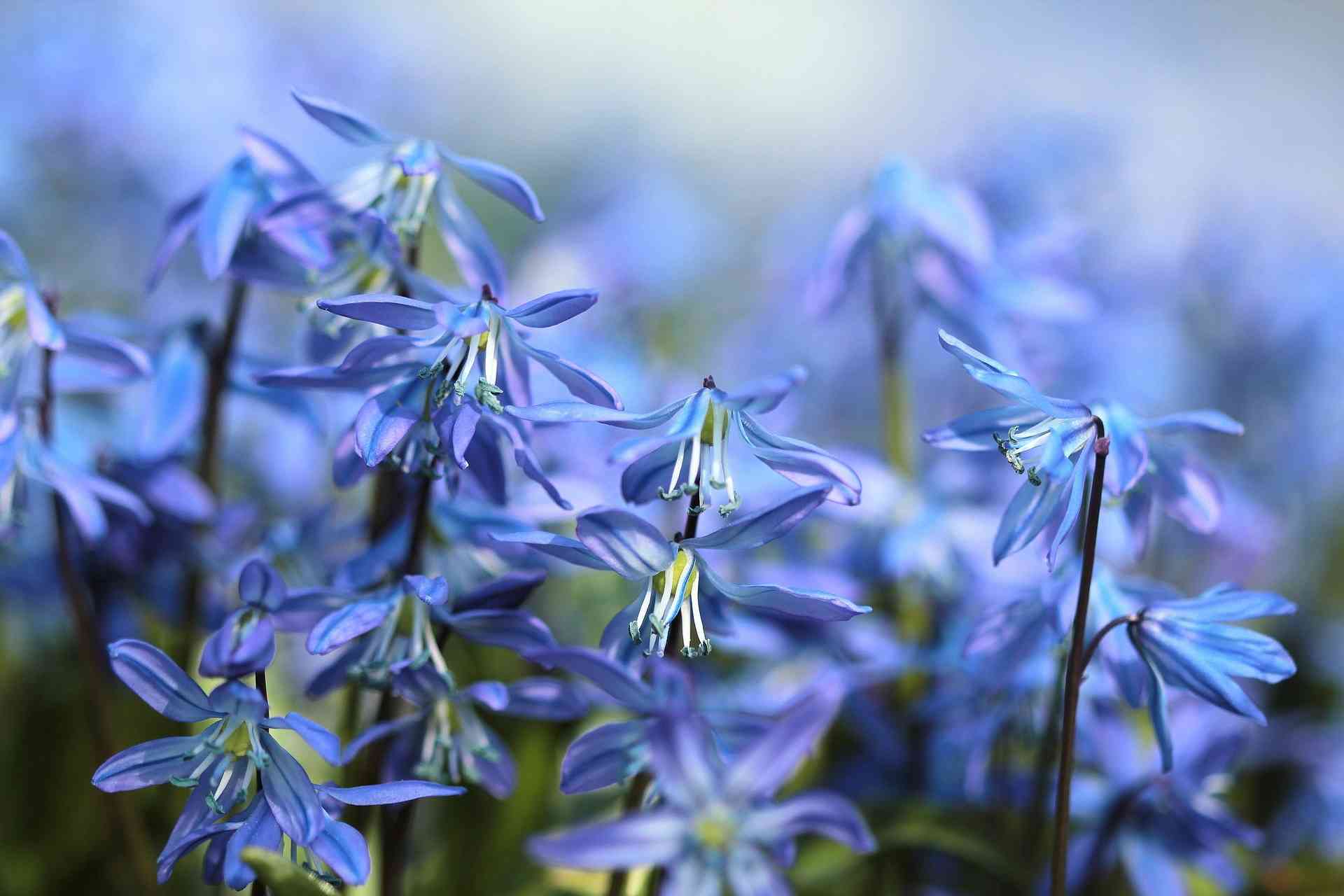 The intense blue star-shaped flowers of Scilla Siberica
The intense blue star-shaped flowers of Scilla Siberica
Once they are well established and undisturbed, their fleshy roots spread over time, forming bulblets or stolons around the mother bulb. The bulbs are toxic only if ingested.
They reseed and naturalise easily in the slightest corner of the garden, capable of flowering entire edges of woodlands. They live for many years, in rockeries, in lawns, but also under trees, at the foot of deciduous bushes, forming beautiful, floriferous carpets and vigorous tufts.
At the end of winter, in January for the earliest squills, each small bulb develops 1 to 4 floral stems, fine but sturdy, green, red, or brown in colour, sometimes branched towards the top. They gracefully bend under the weight of the bells.
Squills are among the first flowers of spring, some very early, arriving at the end of the snowdrop flowering, at the same time as crocuses, Eranthis, and primroses.
For two to three weeks, their luminous flowering, resembling hyacinths, forms waves of sky blue, pink, or white, carried by fresh green tufts.
 Scilla siberica ‘Spring Beauty’ – White campanulate squill – Pink Spanish squill
Scilla siberica ‘Spring Beauty’ – White campanulate squill – Pink Spanish squill
Each floral stem bears more or less dense clusters of bell-shaped flowers, flat or star-shaped, usually light and bright blue, porcelain blue, intense blue, but sometimes pure white or pink, especially in campanulate squills which present the widest range of colours. The flowers gathered in clusters of 2 to 35 at the tip of the stem measure from 3 mm to 2 cm in diameter. The litardierei squill offers very compact and floriferous clusters, composed of 15 to 35 small star-shaped flowers.
The drooping bells of nutans squills and campanulate squills are slightly flared, either slightly or strongly recurved at their tips, and sometimes bear blue anthers.
The star-shaped flowers are composed of 6 tepals sometimes marked with deeper blue bands on the reverse of the petals, as seen in ‘Tubergeniana’, the highly regarded cultivar of Scilla mischtschenkoana.
Not fragrant, they are however melliferous and heavily visited by pollinating insects. After flowering, the faded flowers produce globose fruits that release tiny black seeds that reseed spontaneously.
 The fresh green to dark green foliage of squills is abundant and forms semi-erect tufts
The fresh green to dark green foliage of squills is abundant and forms semi-erect tufts
The leaves only emerge at the end of winter and in spring in April-May, depending on the varieties. Around this floral stem, most often at the same time as the flowers, each bulb develops 2 to 6 basal leaves that are more or less linear. Ranging from 4 to 50 cm in length, the drooping leaves are narrow and smooth, shiny, wider at the base, and sometimes strap-like or gutter-shaped. Only the two-leaved squill has only two leaves.
After flowering, the leaves collapse onto the ground, then the deciduous foliage disappears in summer, starting in June, leaving the bulb dormant underground.
Easy to cultivate in non-burning sun or partial shade, they even tolerate complete shade. Some, like the campanulate squills, appreciate a sunny exposure to bloom well. Not demanding, squills thrive in all well-drained, cool, humus-rich soils, ideally clay-loam.
As soon as the conditions are right, they thrive and easily naturalise in all gardens.
With their luminous bells, they create scenes of great freshness. As ground cover in light shade, they spread limitlessly in woodlands, at the foot of trees and deciduous bushes alongside other spring bulbs to naturalise such as crocuses, cyclamen Coum, Corydalis solida, Ipheions, Muscari, anemones Nemerosa, daffodils, snowdrops, hyacinths, botanical tulips, and chionodoxas. They form abundant flowering colonies.
Intense blue or white squills will also be very decorative at the front of a flower bed, in rockeries, in borders, scattered in meadows or lightly mown lawns, and in the wilder corners of the garden.
These small bulbous plants are excellent companions for early perennials such as hellebore, primroses, periwinkles, heathers, Brunnera, or Viola Odorata, or ground covers like Alyssum.
Their low height makes them < strong>very interesting for use in pots mixed with other early-flowering bulbs.
 Squilla bulbs naturalise quickly, forming vast colonies
Squilla bulbs naturalise quickly, forming vast colonies
“`
Read also
Scilla: planting and careSpecies and varieties
On counts mainly about ten species of Scillas cultivated in our gardens, the most common being the campanulate Scilla, Scilla hispanica or Spanish Scilla, which has produced numerous white and pink cultivars, and the essential Wood Hyacinth or Scilla nutans.
We also distinguish the very early Scilla Tubergeniana, the montane Scilla bifolia, the very hardy Siberian Scillas, and the highly floriferous Scilla litardierei, also known as Meadow Scilla.
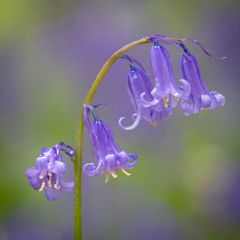
Hyacinthoides non-scripta
- Flowering time May, June
- Height at maturity 35 cm
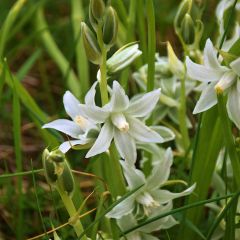
Scilla siberica Alba
- Flowering time March, April
- Height at maturity 15 cm
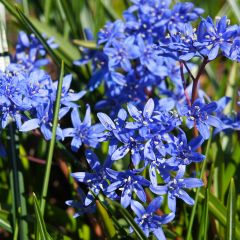
Scilla bifolia
- Flowering time April, May
- Height at maturity 12 cm
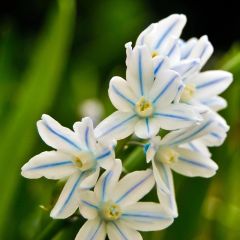
Scilla mischtschenkoana 'Tubergeniana'
- Flowering time March, April
- Height at maturity 15 cm
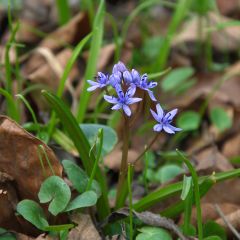
Scilla siberica 'Spring Beauty'
- Flowering time April, May
- Height at maturity 15 cm
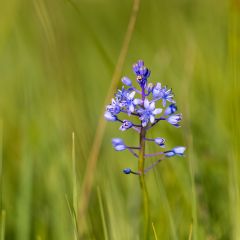
Scilla litardierei
- Flowering time June
- Height at maturity 15 cm
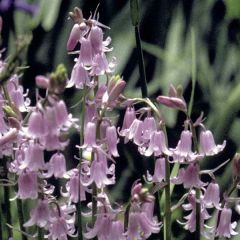
Hyacinthoides hispanica Rosea
- Flowering time May, June
- Height at maturity 35 cm
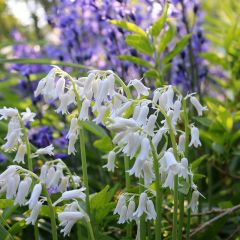
Hyacinthoides hispanica Alba
- Flowering time May, June
- Height at maturity 35 cm
Discover other Scilla
View all →Available in 1 sizes
Available in 1 sizes
Available in 1 sizes
Available in 0 sizes
Available in 1 sizes
Available in 1 sizes
Available in 1 sizes
Available in 1 sizes
Available in 1 sizes
Available in 1 sizes
Planting
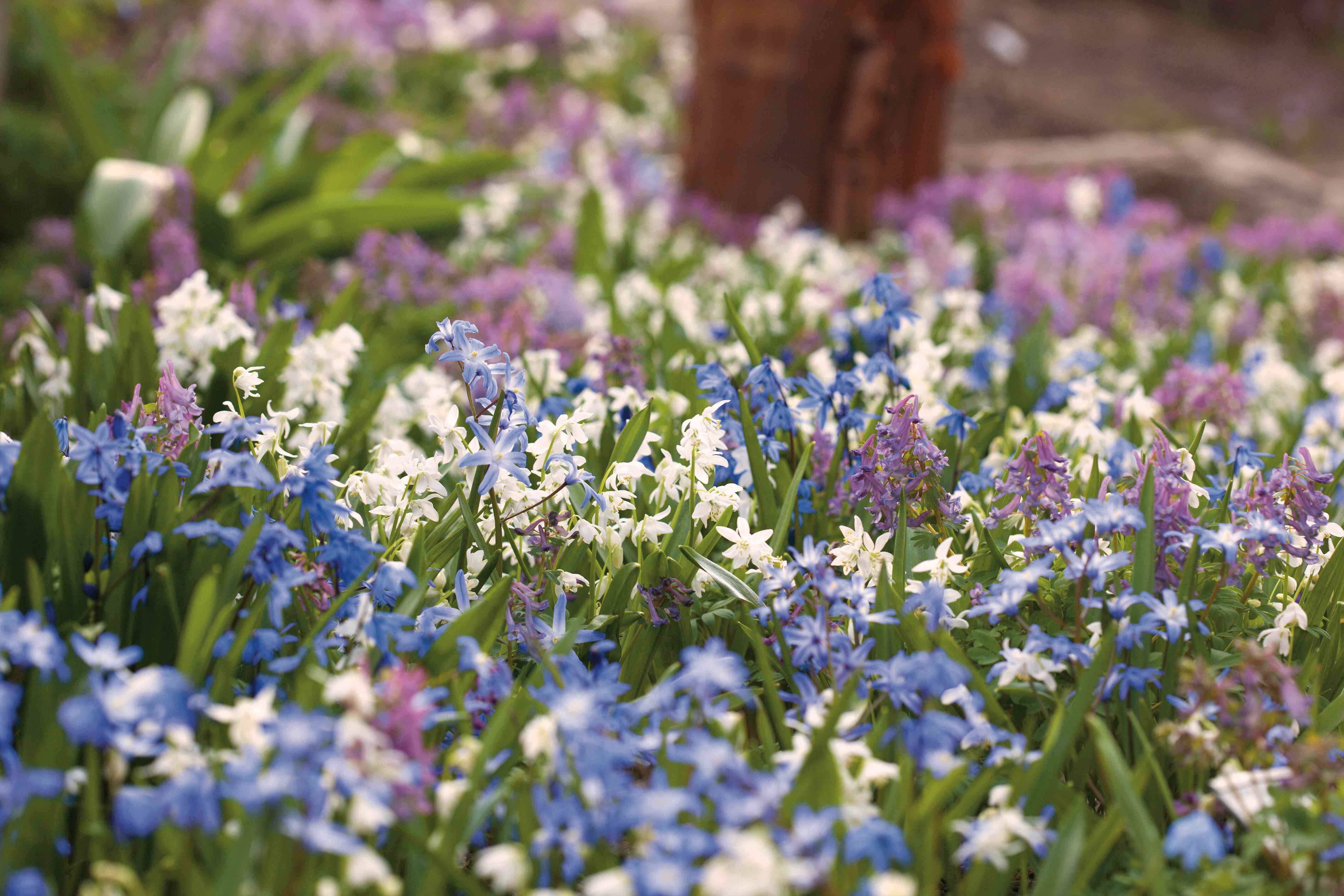
Scilla siberica ‘Alba’-Scilla siberica ‘Spring Beauty’- Chionodoxa ‘forbesii’-Corydalis solida- Photos Tommy Tonsberg-
Where to Plant Scilla?
Scilla are easy-to-grow plants. Low-maintenance, they prefer partial shade but can also tolerate completely shaded areas and non-scorching sunny spots.
Very comfortable in rather cool climates, perfectly hardy, they withstand harsh winters, sometimes surviving temperatures below -15°C: they thrive in all regions, even at altitude.
Scilla bulbs settle well in ordinary, fairly fertile, cool but especially well-drained soil: they dislike waterlogged conditions.
Versatile, Scilla integrate into all settings and will naturalise in light woodland, at the base of deciduous trees and bushes, on a slope, along a path, in rockeries, or scattered across a lawn.
After flowering, Scilla display wilted foliage forming a somewhat neglected carpet that can easily be masked by planting erythroniums, wood anemones, pulmonarias, or euphorbias among them.
They can also create beautiful spring pots.
When to Plant Scilla Bulbs?
Plant the bulbs preferably in autumn from September to November to see them bloom in early spring.
How to Plant Scilla?
In the Ground
Scilla deserve to be planted in abundance (about 100 per m²), in small groups for a natural planting, in a lawn or as a flowering carpet, for a spectacular effect!
The only requirement: they need well-drained and well-amended soil.
- Clear the soil of weeds and stones
- Loosen the soil deeply with the addition of organic matter
- Improve drainage if necessary with gravel mixed into the soil or laid as a bed under the bulbs
- Plant at a depth of 8-10 cm with the bulb tip facing upwards
- Space the bulbs 5 to 10 cm apart or plant in groups of 10 or 15, ensuring they do not touch
- Cover the bulbs with twice their height of soil
- Water twice a week during the growing season
- Keep dry in summer
- Leave the bulbs in place, they will spread over time
To Create a Flowering Carpet
Scilla naturalise very easily, making them perfect for creating flowering spots around the house, in borders, at the edge of woodlands, or at the base of trees. For a lovely effect, trace an irregular, oval shape.
For a successful mass planting, count on about 100 bulbs per m². Dig out part of the chosen border area to a depth of 10 cm, then place the bulbs spaced about 8 cm apart. Backfill the area.
In Pots: A Lasagne Planting
Like hyacinths, Scilla bulbs can easily be grown in pots to enjoy their flowering on the terrace or balcony. Opt for a “lasagne” or layered planting: a technique of planting these flowering bulbs in successive layers mixed with other spring bulbs like daffodils, crocuses, hyacinths, and botanical tulips… The benefit? Enjoy a continuous bloom throughout spring.
→ Learn more in our advice sheet: How to Grow Scilla in Pots?
Maintenance and Care
Scillas are easy and accommodating plants that require no special care. No pruning is necessary; however, to limit spontaneous sowing, you can cut the flower stems after flowering. Only mow or cut the foliage when it has faded, to allow the bulb time to replenish its reserves needed for the next flowering.
Divide the bulbs in summer, every 4 years at most, to maintain vigorous plants.
In pots:
- Water regularly
- Optionally apply special bulb fertiliser every 15 days until flowering is finished
Possible diseases
The Scilla bulb offers good resistance to diseases. When grown in all the required planting conditions, it is not afraid of much.
However, like many bulbs, it can be susceptible to viroses that distort and discolour the leaves. Remove affected bulbs in case of an attack.
Multiplication
Sowing
We do not recommend sowing, especially since Scillas readily self-seed: a plant grown from Scilla seeds will take at least three years to flower.
Division
After two years, you can divide the clumps of Scilla by separating the bulblets formed around the mother bulb. Do this in June when the leaves turn yellow.
- Dig up the clump with a fork
- Separate the bulbs by hand or with a small knife
- Replant the bulblets immediately or pot them before transplanting in the following autumn
- Water lightly
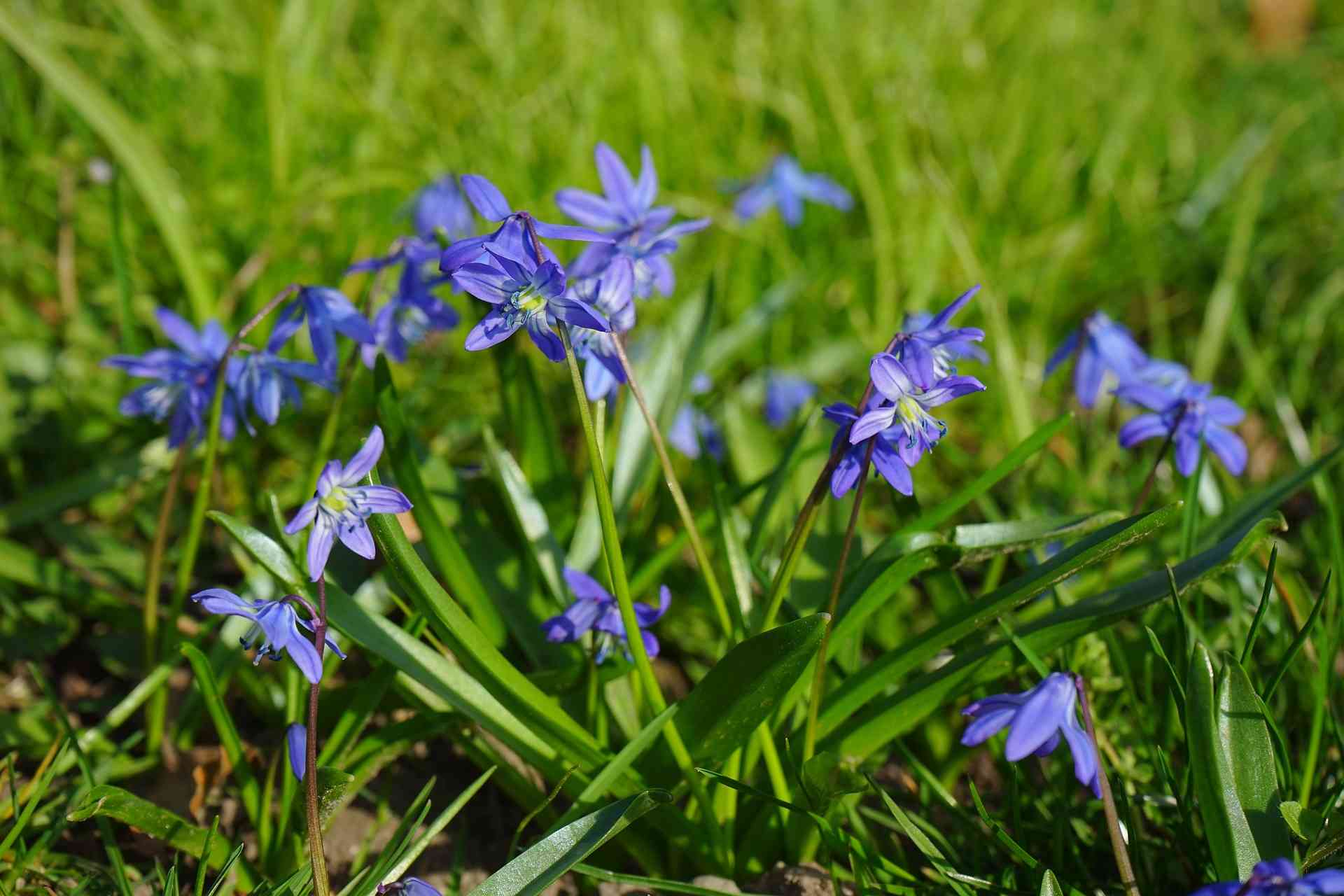 Division of Scillas should be done just after flowering, when the foliage fades
Division of Scillas should be done just after flowering, when the foliage fades
Associate
Scillas find their place in a flowerbed, in naturalized woodland, under deciduous trees or bushes (Forsythia), or in a rockery alongside a multitude of plants that, like them, require little attention.
Graceful, with their richly coloured flowers, they bloom abundantly in the heart of spring in all natural-inspired gardens without gardeners or weekend gardens, creating fresh scenes in carpets of flowers or delicate foregrounds in borders. In a vibrant monochrome blue or contrasted against white/blue or blue/yellow combinations.
The intense blue of the bells of a Scilla bifolia or a Scilla siberica ‘Spring Beauty’ offers a spectacular contrast with white, soft yellow, and green-yellow flowers like those of early Euphorbias, Daffodils, small botanical Tulips, Crocuses, and Snowdrops. They form magnificent carpets against a backdrop of Anemone sylvestris, winter Hellebores, or Cyclamen coum.
Scillas are charming under late-flowering perennials like Hostas, Pulmonaria, Corydalis solida, Elf flowers, or low-growing groundcovers like Bugle.
Planted in numbers for beautiful spectacular effects, these luminous bulbous plants create a successful size contrast alongside large-flowered bulbs like Daffodils. All pair well with small spring bulbs like Hyacinths, Ipheions, Violas, Anemone blanda or Nemerosa, Iris reticulata, or Erythroniums.
Their delicate bells make lovely fresh bouquets when mixed with mini Daffodils and Muscari.
Scillas are perfectly suited for pot cultivation on a windowsill or balcony, mixed with Pansies, Daffodils, Crocuses, early Tulips, Hyacinths, or Primroses.
→ Discover more association ideas with Scillas in our advice sheet!
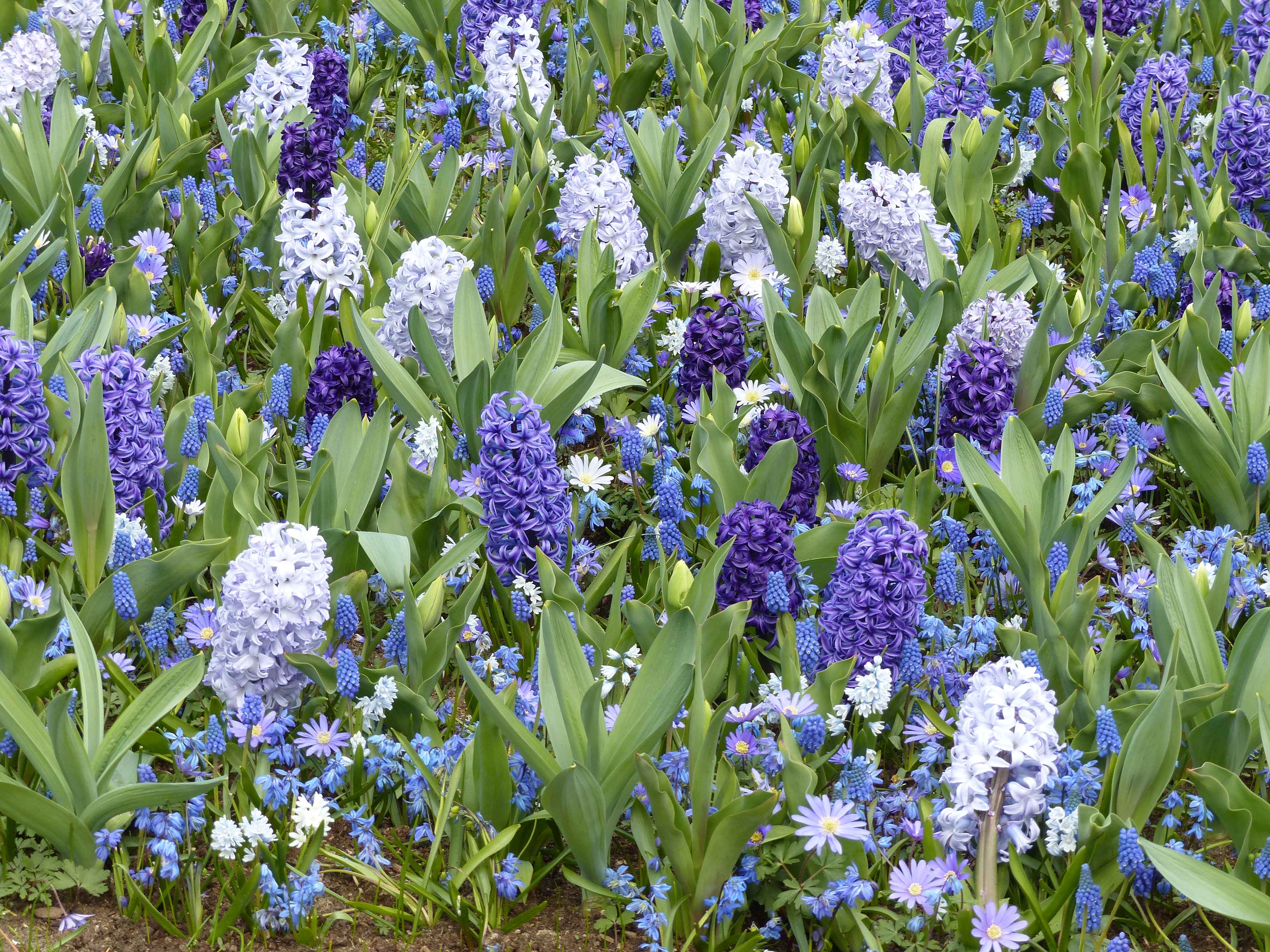
Hyacinth ‘Blue Jacket’, ‘Blue Eyes’, Muscari, Scilla, and Anemone blanda
For further reading
- Discover our lovely range of scillas: the best varieties for your garden
- Advice sheet: Which bulbs to grow indoors?
- Advice sheet: Bulb sizes: understanding to choose better
- Advice sheet: 6 bulbs to naturalise in the garden
- Advice sheet: 9 blue-flowered bulbs to have in your garden
- Advice sheet: Scillas, the most beautiful varieties
Frequently asked questions
-
Why are the leaves of my squills deforming?
Scillas are bulbous plants that are quite resistant to diseases. However, as can sometimes happen with flowering bulbs, they may be susceptible to diseases that distort and discolour the foliage and their flowers. Unfortunately, in the event of an attack, there is no miracle solution: affected bulbs must be removed. Poor planting conditions can make bulbs more sensitive, so ensure proper soil drainage at the time of their installation.
-
When can I cut back the clumps of Scilla?
Scilla bulbs replenish their reserves through their foliage, so only trim or cut it when it turns yellow and dries out, around June. This will help preserve the flowering for the following spring.
- Subscribe!
- Contents































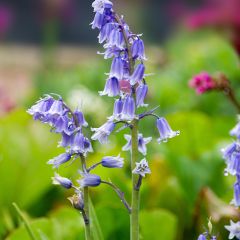
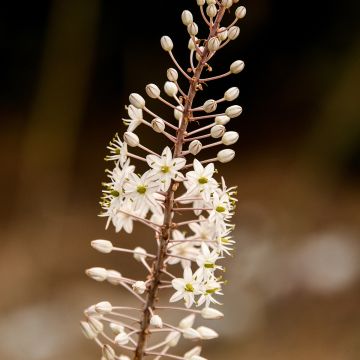

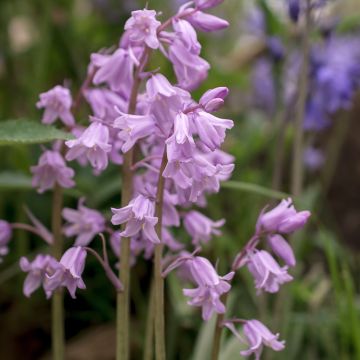
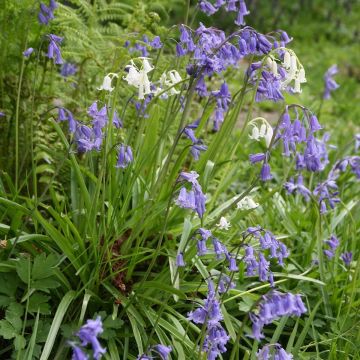
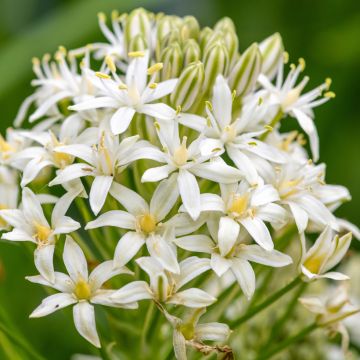

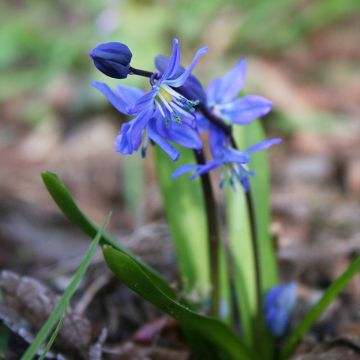



Comments